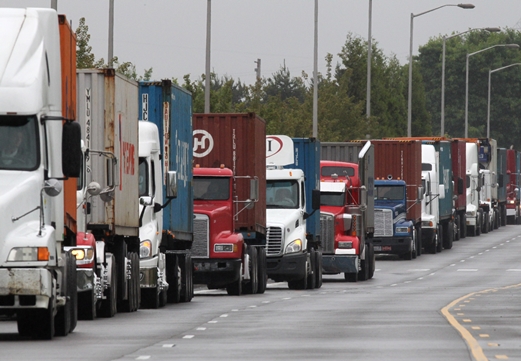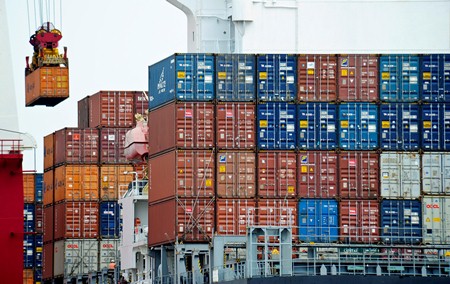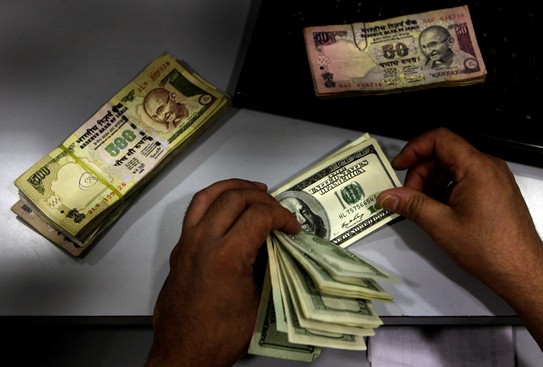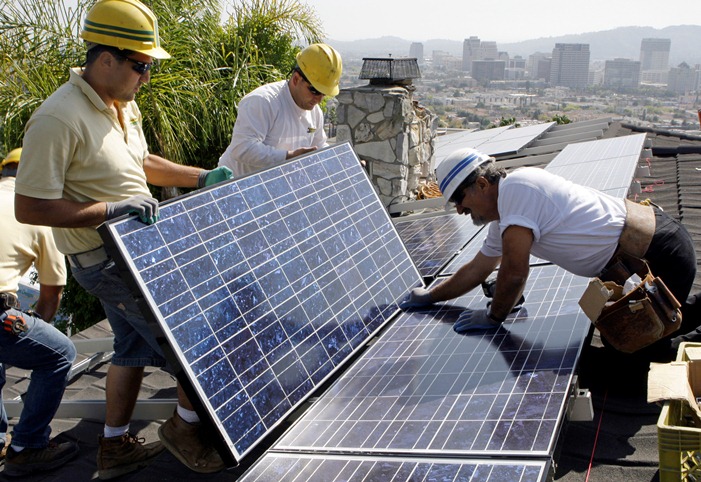Rising labor and other costs overseas, the desire to reducesupply chain uncertainty and increased transportation costs aredriving interest in re-shoring by U.S. producers of goods,according to a June survey by the National Association ofManufacturers (NAM). That bodes well for commercial insurersworking in this increasingly competitive market.
|Manufacturing and construction were the two industries hardesthit by the recession, accounting for roughly half of the nation'sjob losses during 2008 to 2009—including 2.3 million workers in themanufacturing sector alone, according to Chad Moutray, NAM's chiefeconomist.
|Since then, the manufacturing industry at large has “learned todo more with less” and has slowly started to bounce back, he says,even showing gains in employment: A little over 10% of all jobscreated in the economy over the past two years came from themanufacturing sector.
|Click “next” to read the top eight reasons why the U.S.manufacturing industry is reinvesting in domestic production.
|Photos provided by AP Images.
|| Rising labor costs (68%).
Rising labor costs (68%).
According to media reports, labor costs in China have risen bysome 22% in 2013 alone, and in some parts of the country, as muchas 60% since 2009, with a further doubling of wages expected overthe next five years. This has eroded China's competitiveness, as itloses manufacturing business to its neighbors and economiccompetitors worldwide.
|| Desire to reduce supply chain uncertainty(52%).
Desire to reduce supply chain uncertainty(52%).
A 2012 World Economic Forum report noted that natural disastersare the biggest supply chain risk worldwide, followed by politicalconflict/unrest, sudden spikes in demand, import/exportrestrictions, and terrorism. Top network vulnerabilities arereliance on oil, availability of information, extensivesubcontracting and supplier visibility—all risks andvulnerabilities for which the U.S. has displayed proven riskmanagement and loss-recovery capabilities.
|| Increased transportation costs(44%).
Increased transportation costs(44%).
According to Logistics Management, volatile fuel costs areexpected to continue into next year. Plus, East-West shipping costslook like they might rise, thanks in part to fuel costs, but alsobecause many carriers lost money in 2010 and 2011 and cut theircapacity to save money. That could lead to a shipping crunch in thenear future.
|| Increased labor productivity in the U.S.(36%).
Increased labor productivity in the U.S.(36%).
The amount of output per hour worked in the U.S. has steadilygrown in recent years, with a 0.5% increase in 2011 and a 1.5%increase in 2012. Productivity has grown by roughly 2012 amounts sofar in 2013, with the possibility that it might be even higher,according to the U.S. Department of Labor. A big reason for thegains has come from workforces that were downsized in 2008 and2009, and not yet restored to their pre-recession levels.
|| Exchange rate volatility (32%).
Exchange rate volatility (32%).
An October 2013 paper from the World Bank presented a multi-yearstudy of Chinese firms that verified that volatility in realexchange rate has a direct trade-deterring effect. Firms simply donot export as much to countries with unsteady currencyfluctuations. Conversely, countries with well-developed financialmarkets have a natural hedge against exchange rate risk. This putsthe advantage back to the U.S., where the dollar's stabilitycompetes well against less stable currencies, such as the Brazilianreal and the Indian rupee.
|| Issues with intellectual property(28%).
Issues with intellectual property(28%).
A report by the World Intellectual Property Organization's 2013World Intellectual Property Report notes that brands have becomemore valuable than ever; worth tens of billions among top-flightfirms such as Apple, Google, Coca-Cola and other regulars of theFortune 500. The United States files nearly twice as many annualtrademark applications as Brazil, Australia, Mexico, India, France,Russia and Germany, in large part thanks to strong protections ofintellectual property both at home and abroad, which encouragesbusinesses to set up shop stateside. Case in point: President Obamarecently signed the Trans-Pacific Partnership with 12 countries,including Japan, Australia, Malaysia, Vietnam, Singapore, Canadaand Mexico strengthening current U.S.-styles IP protectionstandards, to the competitive disadvantage of non-TPP nations, suchas South Korea, Thailand and China.
|| Increased energy competitiveness due toreduced U.S. energy costs (24%).
Increased energy competitiveness due toreduced U.S. energy costs (24%).
The rise of new domestic sources of shale oil in the U.S. hasraised the distinct possibility of energy independence for thecountry within a few decades, maybe less. Meanwhile, thedevelopment of alternative energy sources such as solar power(which the U.S. Department of Energy projects will drop in cost by75% by 2020) points to a cheaper energy environment for the UnitedStates. Given how much energy costs factor into other competitivepressures, this means good things for U.S.-based manufacturing.
|| Need for higher-skilled labor in the U.S.(16%).
Need for higher-skilled labor in the U.S.(16%).
According to Forbes, in each of the last 10 years, U.S. employerdemands have exceeded the supply of H1-B visas for highly skilledworkers. In 2013, the supply of those visas ran out in just a week.And while this is sparking a passionate debate over immigrationreform, the business reality remains a telling one: the need forhighly skilled workers in the U.S. is red-hot.
Want to continue reading?
Become a Free PropertyCasualty360 Digital Reader
Your access to unlimited PropertyCasualty360 content isn’t changing.
Once you are an ALM digital member, you’ll receive:
- All PropertyCasualty360.com news coverage, best practices, and in-depth analysis.
- Educational webcasts, resources from industry leaders, and informative newsletters.
- Other award-winning websites including BenefitsPRO.com and ThinkAdvisor.com.
Already have an account? Sign In
© 2024 ALM Global, LLC, All Rights Reserved. Request academic re-use from www.copyright.com. All other uses, submit a request to [email protected]. For more information visit Asset & Logo Licensing.








